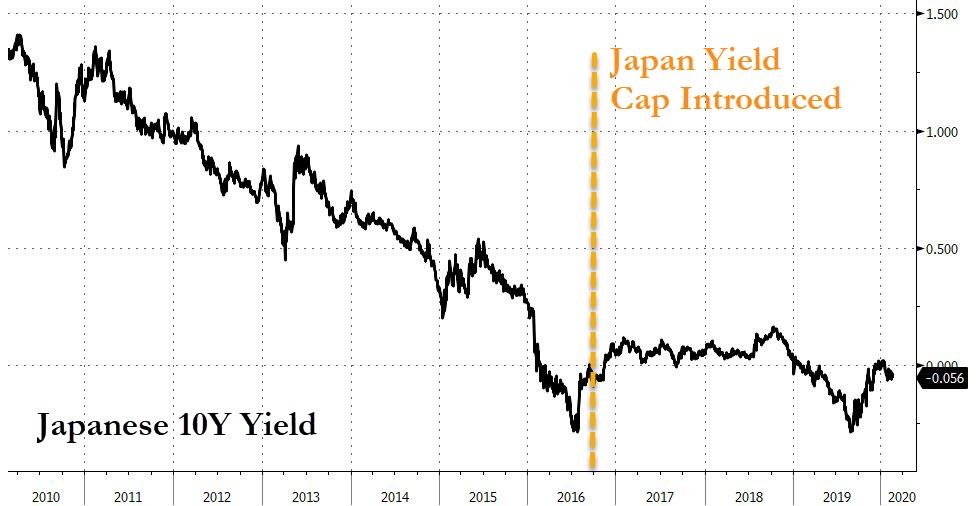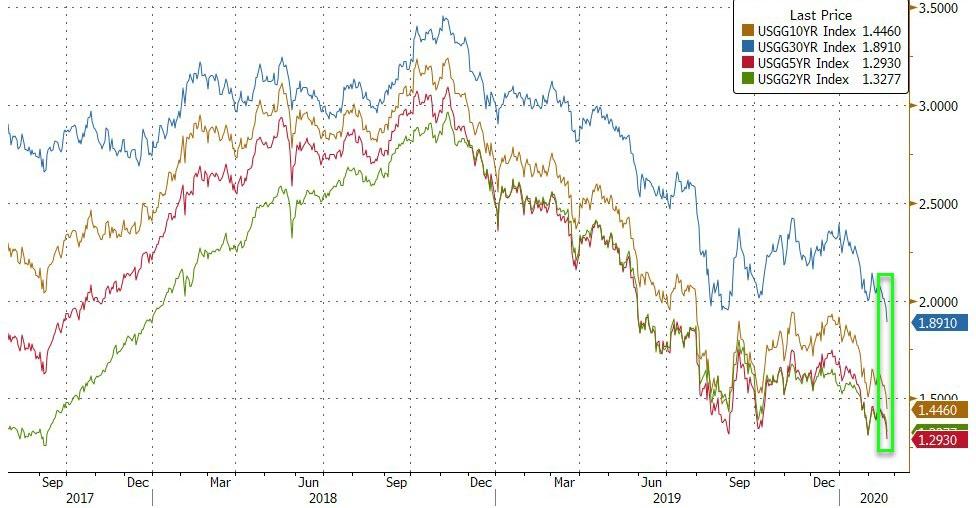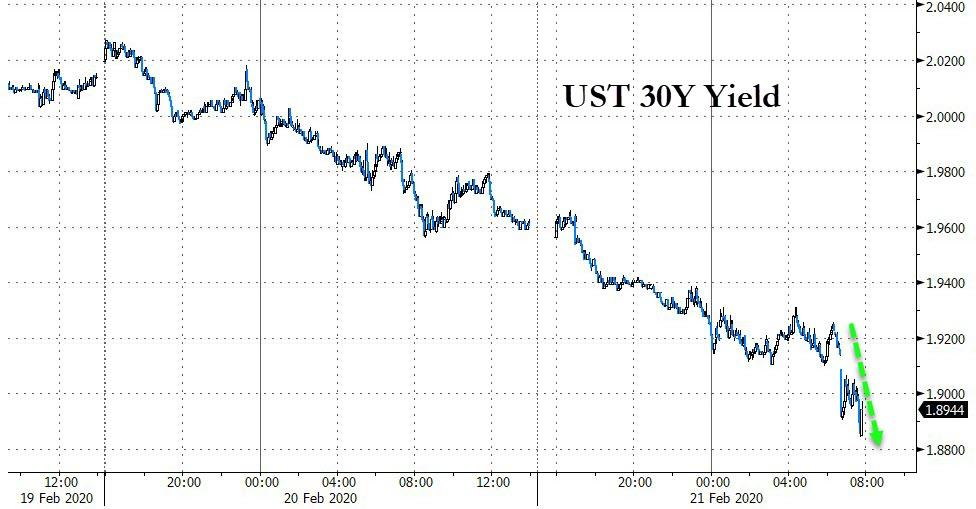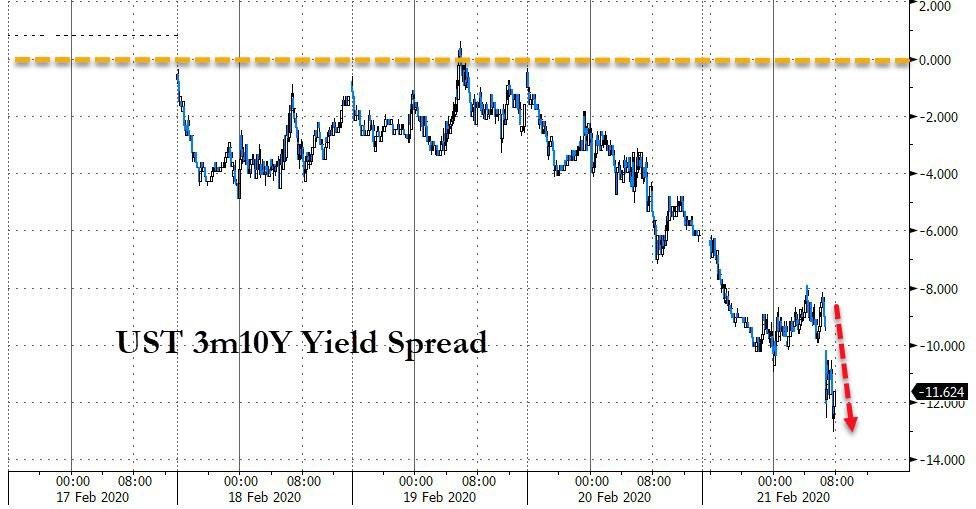Yield Curve Collapse Accelerates After Fed’s Brainard Hints At Japanification
A month ago, The Wall Street Journal hinted at what’s to come when they reported that, as part of their contingency planning for the next recession, Federal Reserve officials are looking at a stimulus scheme the U.S. last used during and after World War II.
From 1942 until 1951, the Fed capped yields on Treasury securities – first on short-term bills and later on longer-term bonds – to help finance war spending and the recovery.
In fact, most recently, the Bank of Japan employed something known as yield-curve control, holding rates on 10-year government bonds at zero by committing to buy those securities at whatever price is needed. Bond yields and prices move inversely.
At issue is how the central bank should manage a faltering economy when short-term interest rates are already low.
And today, as US Treasury yields collapse to fresh record lows (despite record high stock prices), Fed Governor Lael Brainard gave a speech entitled “Monetary Policy Strategies and Tools When Inflation and Interest Rates Are Low”, which suggested a ‘Japanification’ shift in US monetary policy.
Brainard’s speech specifically champions the so-called Yield Curve Control (YCC) as a new policy tool, in an effort to strengthen the credibility of the forward guidance by implementing interest-rate caps in tandem as a commitment mechanism in the event that the policy rate is pushed to the lower bound.
“Based on its assessment of how long it is likely to take to achieve full employment and target inflation, the committee would commit to capping rates out the yield curve for a period consistent with its expectation for the duration of the outcome-based forward guidance”
“This approach would smoothly move to capping interest rates on the short-to-medium segment of the yield curve once the policy rate moves to the lower bound and avoid the risk of delays or uncertainty that could be associated with asset purchases regarding the scale and time frame”
“I prefer flexible inflation averaging that would aim to achieve inflation outcomes that average 2% over time”
As Viraj Patel noted,
“This is no longer a drill but a fast-becoming reality. Fed can/will employ some form of YCC in the next big easing package it does (sooner than we think). No doubt US bond yields positioning for this…”
And sure enough, yields and the curve are accelerating lower and flatter on the speech…
However, while Brainard admits there are possible financial stability concerns:
Financial stability is central to the achievement of our dual-mandate goals. The new normal of low interest rates and inflation also has implications for the interplay between financial stability and monetary policy.
To the extent that the combination of a low neutral rate, a flat Phillips curve, and low underlying inflation may lead financial imbalances to become more tightly linked to the business cycle, it is important to use tools other than monetary policy to temper the financial cycle.
She seems to suggest that other mechanisms would be used to tamp down excess, such as a counter0cyclical capital buffer.
But, as WSJ notes, there are serious risks (especially if they ever normalized).
If investors grew less willing to buy securities because they thought the Fed might abandon its peg, for example because inflation accelerated unexpectedly, then the Fed would have to increase its purchases to maintain the peg.
This happened in 1947 when the Fed raised its cap on short-term yields while maintaining one for long-term rates. Yields on long-term bonds suddenly looked less attractive to investors, who also may have doubted the credibility of that cap. As a result, the Fed had to purchase more bonds to defend the cap. By the end of 1948, its bondholdings rose to $11 billion from less than $1 billion, accounting for half of its portfolio.
But all of those worries are pointless to a Federal Reserve whose real mandate remains Dow 30k or bust!
Tyler Durden
Fri, 02/21/2020 – 11:08
via ZeroHedge News https://ift.tt/2T57dAh Tyler Durden



